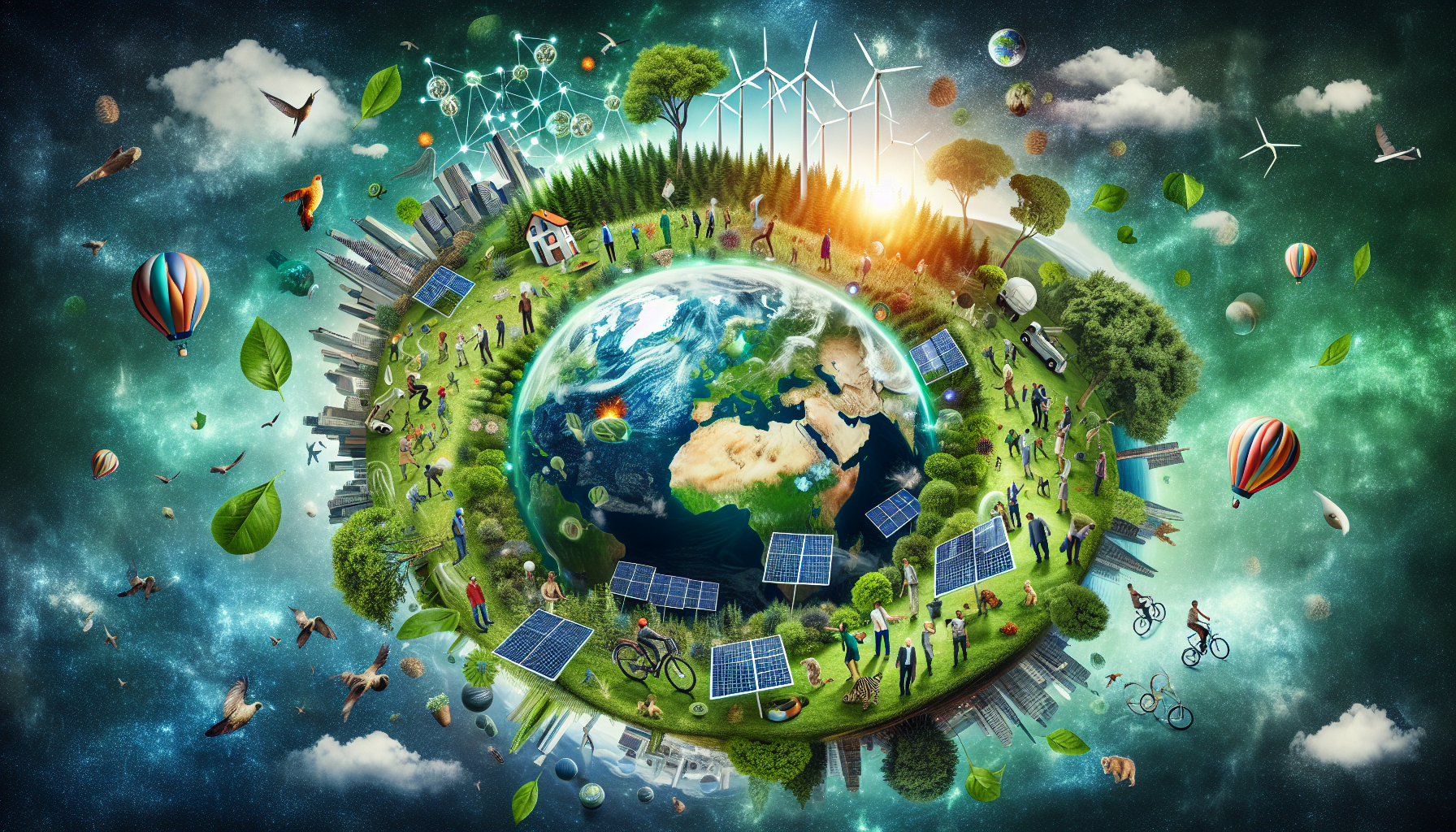The Green Transition: Paving the Way to a Sustainable Future
As the world grapples with the pressing challenges of climate change, pollution, and dwindling natural resources, the concept of a green transition has become more crucial than ever. This transformative shift involves moving towards a more sustainable economy, utilizing renewable resources and innovative technologies to reduce environmental impact. In this blog post, we’ll explore the key elements of the green transition, its importance, and real-world examples of countries and companies that are leading the way.
What is the Green Transition?
The green transition refers to the process of changing from traditional systems reliant on fossil fuels and other non-renewable resources to sustainable alternatives. This encompasses a wide range of sectors, including energy, transportation, agriculture, and manufacturing. The objective is to create an economy that is not only environmentally sustainable but also economically viable.
Key Components of the Green Transition
-
Renewable Energy:
- The backbone of the green transition is the shift from fossil fuels to renewable energy sources such as solar, wind, and hydroelectric power.
- Statistics: According to the International Renewable Energy Agency (IRENA), the renewable energy sector employed over 11 million people globally in 2018, highlighting its potential for job creation.
-
Energy Efficiency:
- Enhancing the energy efficiency of buildings, appliances, and industrial processes can significantly reduce carbon footprints and energy consumption.
- Example: The Energy Star program in the U.S. has helped consumers save over $430 billion on utility bills since its inception.
-
Sustainable Transportation:
- The green transition also emphasizes transitioning to electric vehicles (EVs), public transport, and other sustainable modes of transportation to reduce greenhouse gas emissions.
- Case Study: Norway has emerged as a leader in the adoption of electric vehicles, with over 54% of new car sales being electric in 2021.
-
Circular Economy:
- This approach focuses on minimizing waste and making the most of resources by reusing, recycling, and repurposing materials.
- Statistic: The Ellen MacArthur Foundation reports that transitioning to a circular economy could generate $4.5 trillion in economic benefits globally.
-
Sustainable Agriculture:
- Sustainable farming practices that focus on organic farming, permaculture, and regenerative agriculture can help protect ecosystems while still meeting food demands.
- Example: The Netherlands is a frontrunner in sustainable agriculture, leading the world in agricultural exports thanks to high-efficiency farming techniques.
The Importance of the Green Transition
The need for a green transition is underscored by the challenges our planet faces today:
- Climate Change: The increasing frequency of extreme weather events serves as a stark reminder of the impacts of climate change, driven primarily by greenhouse gas emissions from fossil fuels.
- Resource Depletion: With resources becoming scarcer, the green transition aims to create an economy that operates within the planet's ecological limits.
- Public Health: The shift to cleaner technologies can reduce air and water pollution, protecting public health and reducing healthcare costs.
Real-World Examples of Successful Green Transition Initiatives
1. Denmark
Denmark is often cited as a leader in the green transition. The country aims to be fossil-fuel-free by 2050, primarily focusing on wind energy. As of 2021, more than 47% of Denmark's electricity came from wind power, demonstrating a successful model for other countries.
2. California, USA
California has set ambitious climate goals, including achieving 100% clean energy by 2045. The state has also made significant investments in public transportation and electric vehicles, making it a front-runner in sustainable initiatives.
3. New Zealand
New Zealand's commitment to sustainability is evident in its approach to agriculture and conservation. The country's government has pledged to plant one billion trees by 2028, aiming to enhance biodiversity and combat climate change.
Conclusion: The Path Forward
The green transition is not merely an option; it is essential for the survival of our planet and future generations. By embracing renewable energy, enhancing efficiency, and adopting sustainable practices, we can create an economy that thrives while preserving the environment. With countries and companies worldwide leading the charge, the possibilities for a sustainable future are within reach.
Call to Action
As individuals, we can also contribute to the green transition by making conscious choices—whether it be through reducing energy consumption, supporting sustainable businesses, or advocating for eco-friendly policies. Every small action counts towards a larger goal of sustainability and environmental protection.
Tags: #GreenTransition #SustainableFuture #RenewableEnergy #SustainableTransportation #CircularEconomy
Categories: Environment, Sustainability, Economic Development
By focusing on the principles and practices of the green transition, we can navigate towards a world that prioritizes sustainability, health, and economic vitality. Are you ready to be part of this critical movement? Join the conversation in the comments below!

답글 남기기